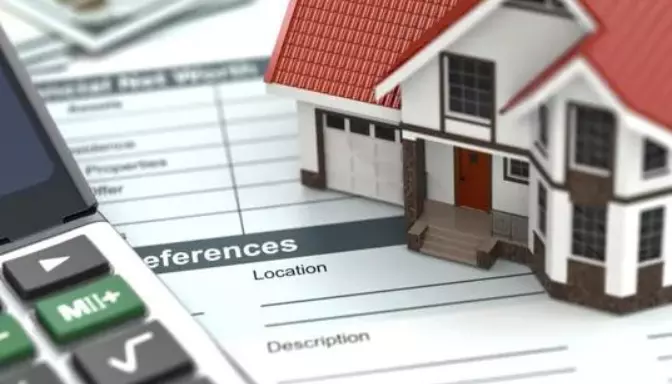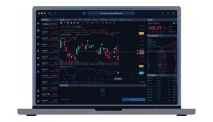Here are some of the best types of investments for a 1031 exchange:
- Delaware Statutory Trusts (DSTs). A DST is a legal entity that owns and operates one or more properties, such as apartment buildings, office buildings, or shopping centers. Investors can buy shares of a DST and own a fractional interest in the underlying properties. A DST is considered a direct ownership of real estate, and therefore qualifies for a 1031 exchange. A DST offers several advantages for investors, such as diversification, professional management, passive income, and low minimum investment. However, a DST also has some drawbacks, such as lack of control, illiquidity, and fees.
- Qualified Opportunity Funds (QOFs). A QOF is an investment vehicle that invests in designated low-income areas, known as Qualified Opportunity Zones (QOZs). The QOZ program was created by the Tax Cuts and Jobs Act of 2017, to encourage economic development and job creation in distressed communities. Investors can defer and reduce their capital gains tax by investing in QOFs, as well as eliminate the tax on the appreciation of their QOF investment if they hold it for at least 10 years. A QOF can be used as a replacement property in a 1031 exchange, as long as it meets the like-kind requirement. A QOF offers several benefits for investors, such as tax savings, social impact, and potential growth. However, a QOF also has some risks, such as uncertainty, volatility, and complexity.
- Triple Net Lease (NNN) Properties. A NNN property is a type of commercial property that is leased to a single tenant, usually for a long term, such as 10 to 25 years. The tenant is responsible for paying all the expenses of the property, such as property taxes, building insurance, and maintenance, in addition to the rent. The landlord receives a steady and predictable income, without any management or operational responsibilities. A NNN property can be a good option for a 1031 exchange, as it provides a hassle-free and reliable investment. However, a NNN property also has some disadvantages, such as dependency on the tenant, lack of diversification, and limited appreciation.
Examples of 1031 Exchange Investments
To illustrate how a 1031 exchange works in practice, let’s look at some examples of different scenarios and outcomes.
Example 1: Simple Exchange
John owns a duplex in Los Angeles that he bought for $500,000 five years ago. He rents out both units and collects $3,000 per month in rental income. He decides to sell the duplex and buy a fourplex in Dallas, which costs $800,000 and generates $6,000 per month in rental income. He hires a qualified intermediary and follows the 1031 exchange rules. Here is the result of his exchange:
- He sells the duplex for $700,000, which means he has a capital gain of $200,000. However, he does not have to pay any capital gains tax on the sale, as he reinvests the entire proceeds in the fourplex.
- He buys the fourplex for $800,000, using the $700,000 from the sale of the duplex and a $100,000 mortgage. He increases his rental income from $3,000 to $6,000 per month, and his property value from $500,000 to $800,000.
- He defers his tax liability until he sells the fourplex, or indefinitely if he does another 1031 exchange. He also keeps his original basis of $500,000.
Example 2: Diversified Exchange
Mary owns a single-family rental in Miami that she bought for $300,000 10 years ago. She rents it out for $2,000 per month and has a mortgage balance of $150,000. She decides to sell the rental and buy two DSTs, one that owns a portfolio of self-storage facilities in Texas, and another that owns a medical office building in Arizona. She hires a qualified intermediary and follows the 1031 exchange rules. Here is the result of her exchange:
- She sells the rental for $400,000, which means she has a capital gain of $100,000. However, she does not have to pay any capital gains tax on the sale, as she reinvests the entire proceeds in the DSTs.
- She buys the DSTs for $400,000, using the $250,000 from the sale of the rental and a $150,000 loan from the DST sponsor. She owns a 10% interest in each DST, which pays her a monthly distribution of $1,500 and $1,000, respectively. She diversifies her portfolio and reduces her management responsibilities, as the DST sponsor handles all the operations and maintenance of the properties.
- She defers her tax liability until she sells the DSTs, or indefinitely if she does another 1031 exchange. She also keeps her original basis of $300,000.
Example 3: Upgraded Exchange
Tom owns a retail strip center in Chicago that he bought for $1 million 15 years ago. He leases it out to several tenants and earns $10,000 per month in net operating income. He decides to sell the strip center and buy a QOF that invests in a mixed-use development project in a QOZ in Atlanta. He hires a qualified intermediary and follows the 1031 exchange rules. Here is the result of his exchange:
- He sells the strip center for $1.5 million, which means he has a capital gain of $500,000. However, he does not have to pay any capital gains tax on the sale, as he reinvests the entire proceeds in the QOF.
- He buys the QOF for $1.5 million, using the $1.5 million from the sale of the strip center. He owns a 10% interest in the QOF, which pays him a monthly distribution of $7,500 and projects a 15% annual return on his investment. He upgrades his property and participates in the economic revitalization of a QOZ.
- He defers his tax liability until he sells the QOF, or until December 31, 2026, whichever is earlier. He also reduces his tax liability by 10% if he holds the QOF for at least five years, and by another 5% if he holds it for at least seven years. He also eliminates the tax liability on the appreciation of his QOF investment if he holds it for at least 10 years.
These are just some examples of how a 1031 exchange can help you defer taxes and grow your wealth. However, each situation is different and may require a different approach. Therefore, it is advisable to consult with a professional tax advisor and a qualified intermediary before engaging in a 1031 exchange. They can help you evaluate your options, identify the best properties, and execute the exchange smoothly and successfully.






